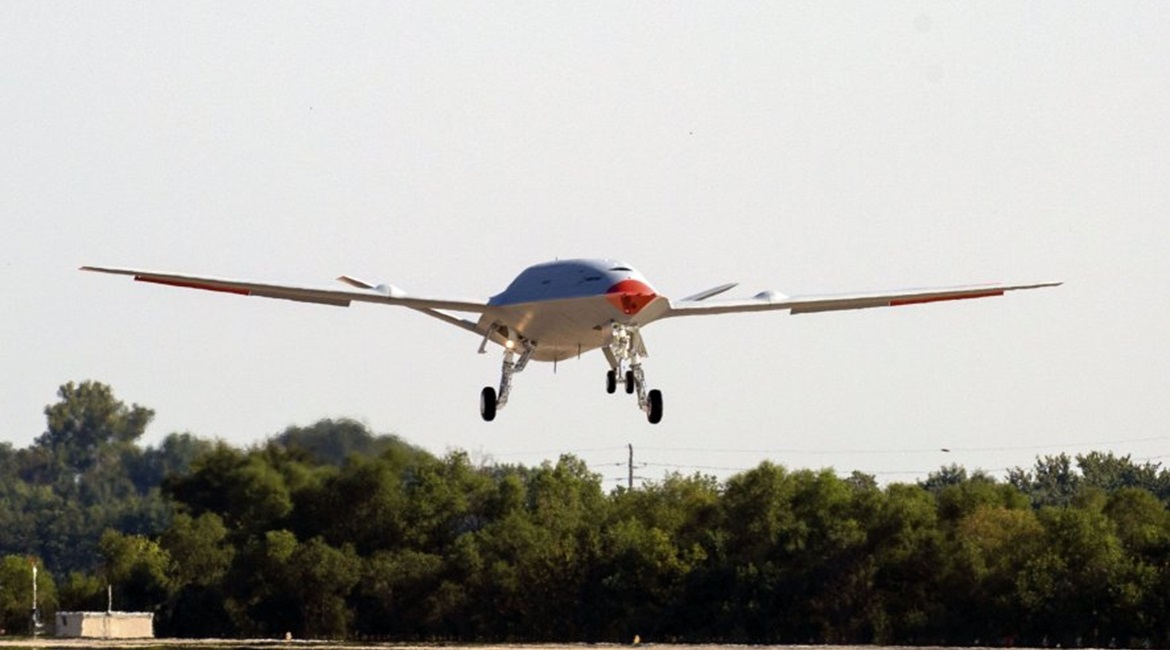
Boeing and the US Navy (USN) flew the MQ-25 Stingray unmanned aerial refuelling aircraft for the first time on 19 September, the manufacturer announced.

Boeing and the US Navy successfully completed the first test flight of the MQ-25 unmanned aerial refueller on 19 September. The MQ-25 test asset, known as T1, completed the autonomous two-hour flight under the direction of Boeing test pilots operating from a ground control station at MidAmerica St. Louis Airport in Mascoutah, Illinois, where the test programme is based. (Boeing)
Test aircraft T1 completed an autonomous two-hour flight under the direction of Boeing test pilots operating from a ground control station (GCS) at MidAmerica St Louis Airport in Mascoutah, Illinois, where the test programme is based.
As noted by Boeing, the aircraft completed an autonomous taxi and take-off and then flew a pre-determined route to validate the aircraft’s basic flight functions and operations with the GCS. T1 is a Boeing-owned test asset that will be joined by four engineering development model (EDM) aircraft under a USD805 million contract awarded by the USN in August 2018.
Billed as the successor to the aborted Unmanned Carrier-Launched Aerial Surveillance and Strike (UCLASS) programme, the MQ-25 Stingray will be a ship-launched aerial refuelling platform under the USN’s Carrier-Based Airborne Refueling System (CBARS) requirement. In addition to its tanking role, the MQ-25 will be equipped for intelligence, surveillance, and reconnaissance (ISR) in permissive airspace.
While the EMD phase of the programme is focused on compatibility with the USN’s Nimitz-class aircraft carriers, the Stingray is intended to be fielded operationally from both the Nimitz- and the Ford-class carriers. The USN has a total requirement of 72 Stingray systems, with initial operating capability (IOC) slated for the mid-2020s.
Looking to read the full article?
Gain unlimited access to Janes news and more...






